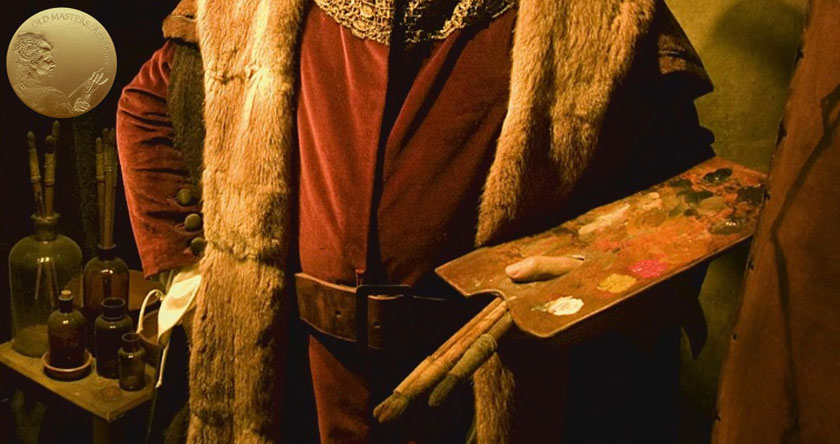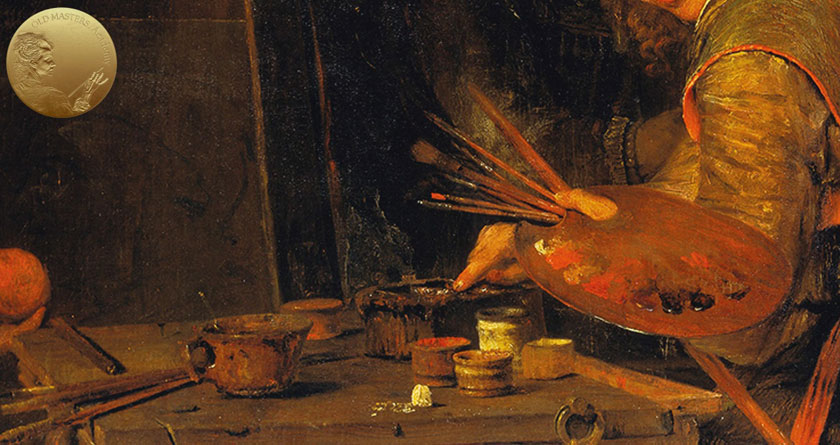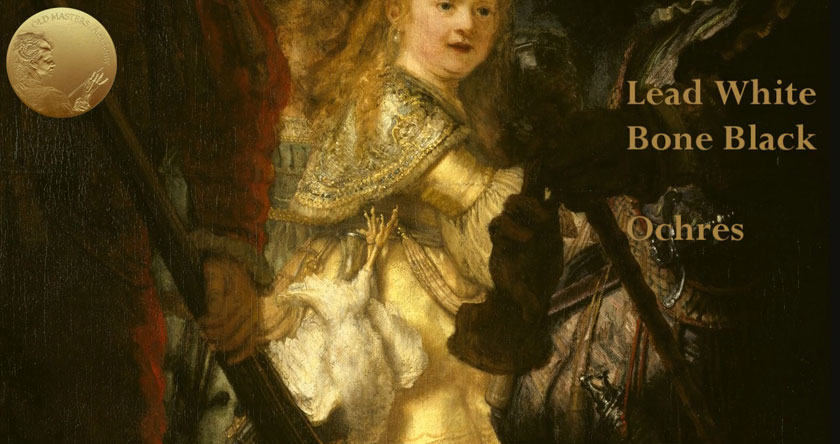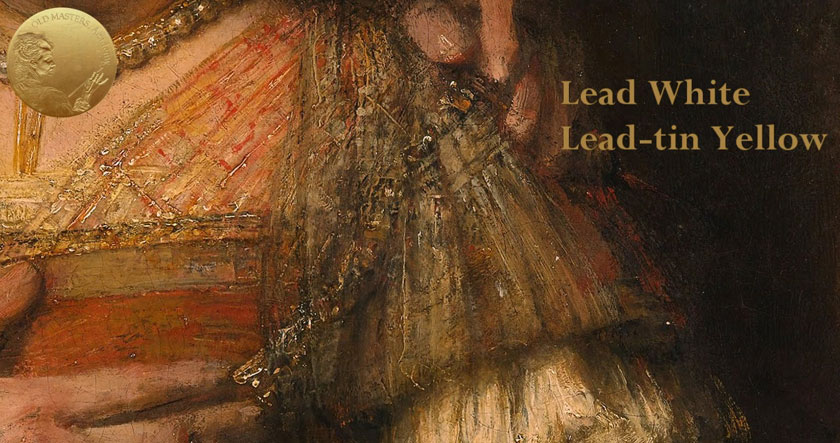Art Lesson 38, Part 4
Learn about Rembrandt’s Palette – What Colors he Used
Learn how to paint like the Old Masters!
Old Masters Academy Online Course
Self-study, self-paced online video courseLifetime membershipOne-time payment: $487Enroll Now!Personal Tutoring online + Online Course
Unlimited tutoring by the Academy teachersLifetime membershipOne-time payment: $997Enroll Now!« Back to the Art Lessons List
Rembrandt’s Palette – What Colors he Used
Rembrandt’s range of pigments brings no surprises or hidden secrets. Rembrandt’s palette includes mainstream pigments that were widely available in the Netherlands in the 17th century. At that time, pigments were sold in apothecaries as grinded powders ready to be mixed with oil to prepare paints in artist studios.
The Rembrandt’s house museum displays the original stone slab he used for grinding pigments with oil. Preparing oil paintings was a time-consuming, laborious task that required certain skills and knowledge of the necessary proportions needed to achieve good quality paint in every particular case.


In this painting, we see the artist holding a palette with colors typical to Rembrandt’s set of colors. The palette contains colors ranging from white to black, including yellow, red, and brown earth colors. However, there is no blue on the palette. The colors on the palette are intended for painting skin tones.
The placement of colors follows a specific order that was consistently used, and studio assistants were trained to load the palette in the preferred way.
The number of pigments Rembrandt used was quite limited. Nevertheless, this restricted palette of stable colors allowed the master to create an indefinite amount of optical effects and combinations of color nuances in his paintings. This was due to Rembrandt’s deep understanding of painting materials, and skills in painting in layers, applying optical glazes, and other painting techniques.
Rembrandt’s choice of colors included lead white, bone black, and earth pigments such as ochres, siennas, and umbers. Impasto passages were often painted in solid and opaque pigments – often lead white and sometimes lead-tin yellow.

Let’s examine the pigments from Rembrandt’s palette.






